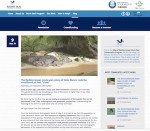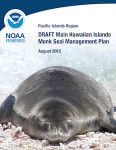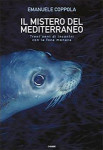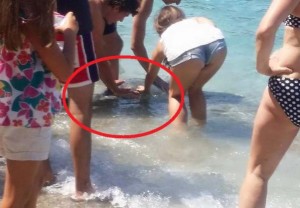Recent Publications
![]()
Karamanlidis, A.A., P. Dendrinos, P.F. de Larrinoa, A.C. Gücü, W.M. Johnson, C.O. Kiraç and R. Pires. 2015. The Mediterranean monk seal Monachus monachus: status, biology, threats, and conservation priorities. Mammal Review 45 (4). doi:10.1111/mam.12053
Abstract
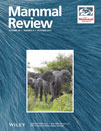 The Mediterranean monk seal Monachus monachus is the most endangered seal species. In this review we summarize the status, ecology, and behaviour of the Mediterranean monk seal, and identify the main threats that currently affect the species and the conservation priorities for securing its survival.
The Mediterranean monk seal Monachus monachus is the most endangered seal species. In this review we summarize the status, ecology, and behaviour of the Mediterranean monk seal, and identify the main threats that currently affect the species and the conservation priorities for securing its survival.- Once abundant throughout the Black Sea and Mediterranean, as well as off the Atlantic coasts of northwestern Africa and Macaronesia, the Mediterranean monk seal has recently suffered dramatic declines, both in abundance and geographical range. It is now estimated that fewer than 700 individuals survive in three or four isolated subpopulations in the eastern and western Mediterranean, the archipelago of Madeira and the Cabo Blanco area in the northeastern Atlantic Ocean.
- Mediterranean monk seals are coastal marine mammals. When resting and pupping on land, individuals generally seek refuge in inaccessible marine caves; this behaviour is, in part, believed to be an adaptation to increased disturbance by humans. Larger aggregations or colonies of the species can now be found only at Cabo Blanco in the Atlantic Ocean and on the island of Gyaros in the eastern Mediterranean.
- The main threats to the survival of the Mediterranean monk seal are habitat deterioration; deliberate killing, mainly by fishermen; and accidental entanglement and drowning in fishing gear. Limited availability of food sources and stochastic and unusual events have occasionally also contributed to Mediterranean monk seal mortality.
- Based on a common consensus among scientists and conservationists, the main conservation priorities for the monk seal are: habitat protection; mitigating negative interactions between seals and fisheries; scientific research and monitoring of local seal populations; education and public awareness campaigns; and rescue and rehabilitation of wounded, sick, and orphaned seals.

